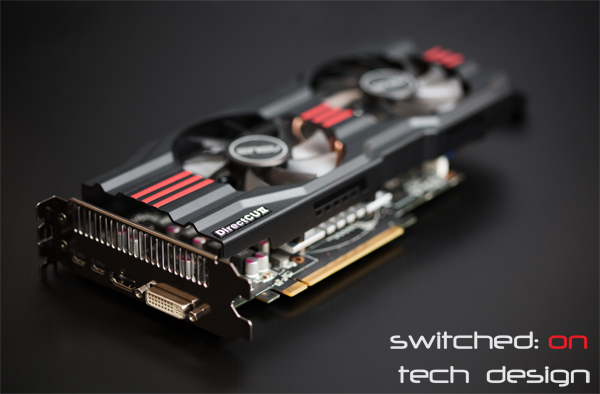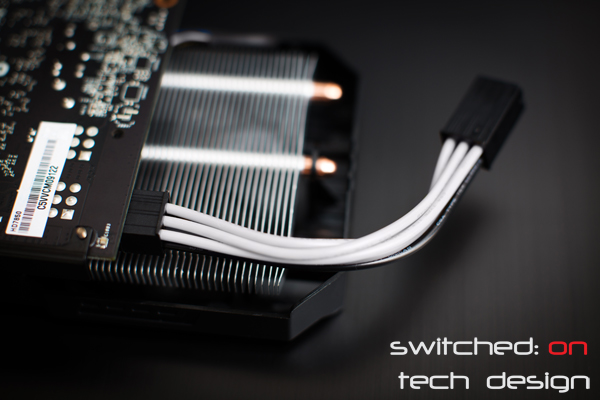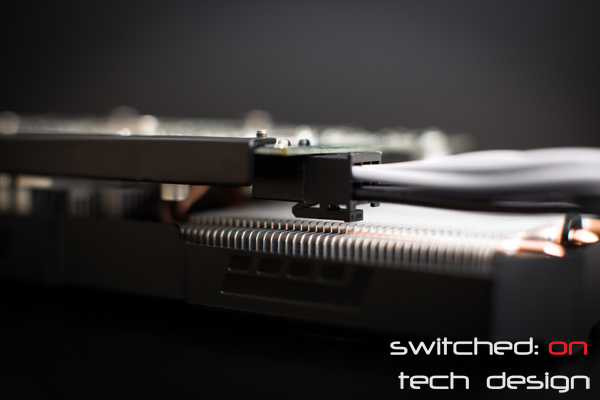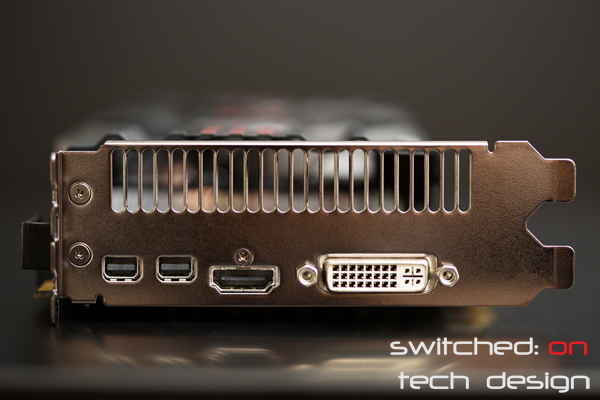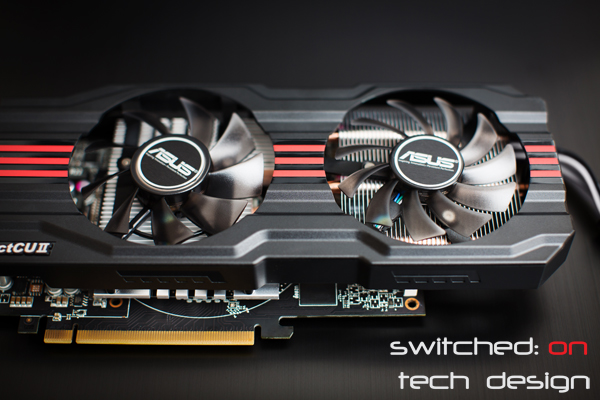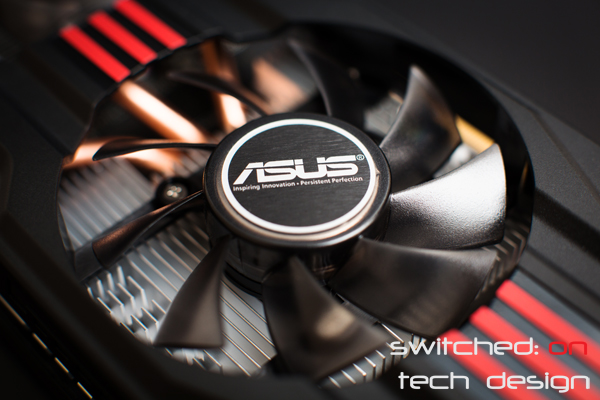This graphics card has grown to be a staple in our workstation and gaming builds; today we have a mini-review of why you might want to consider including on in your own build.
Physically the card is a dual-slot, dual-fan design – specifically;
Length: 10.2″
Height: 4.5″
Depth: 1.7″
The cooler overhangs the relatively short PCB by a surprising amount;
Asus have thoughtfully included an extension cord for the power connector so that you don’t slice up your fingers on the heatsink. This is easy enough to safely remove with long-nosed pliers if you want to connect a sleeved connector directly in place of the not-as-aesthetically-pleasing extension.
Not exactly a lot of clearance for fingers, though. The card ias based on AMD’s new 28nm Pitcairn architecture and as such is PCI-Express 3.0 compliant – note that it is backwards compatible to PCI-Express 2.0. It has 2GB of GDDR5 memory, clocked at 4840MHz. It requires a 450W PSU and a single 6-pin connector, which means it should fit easily into most modern systems power-wise.
In terms of connectivity you get two Displayports, one HDMI and one DVI port. It is possible to convert the DVI to a D-Sub (VGA) port via an adapter if you need the older protocol. The max resolution is 2560×1600 via DVI, or 2048×1536 if converting to D-Sub.
Cooling is taken care of by direct-contact heatpipes and two 7.2cm fans:
The fans run quietly – even remaining quite quiet under load. AMD’s new Pitcairn architecture is a good deal more power efficient and generates less heat than the previous generation of cards and runs cool, even stock – so the Asus card with a much beefier heatsink runs even more cool and quiet. Idle temperatures are ~30-32 degrees Celsius and load temperatures are typically below 70 degrees. The card is factory overclocked 115MHz core clock and 50MHz memory clock faster than the AMD reference design and it has a reasonable amount of overclocking headroom for those who would like to push it further.
In terms of power use it’s extremely efficient compared to the older cards – using ~12-15W idle and ~95-100W under load.
So, how does it compare to the rest of the current graphics card lineup? The 7870 is ~$100 more expensive but only performs around ~10% better, the 7770 is about $130 cheaper and performs to around 30-45% of the 7850, and the 560Ti is around the same price and gives comparable performance – using older tech, however, and as such it produces more heat, is noisier to compensate for that and draws more power.
Our conclusion? The 7850 is an excellent choice when it comes to bang for your buck and it ticks a lot of the right boxes – good connectivity, quiet, power efficient and performs well. It offers a significant step up from the 7770 and there’s currently a reasonable jump in price if you want the next step up, making this a logical choice for a lot of people. If you have questions regarding a specific benchmark we have – whether it’s a game or application – let us know before you put your order in and we’ll discuss how this card will perform for your specific situation.
Questions, remarks, suggestions? Let us know in the comments!
